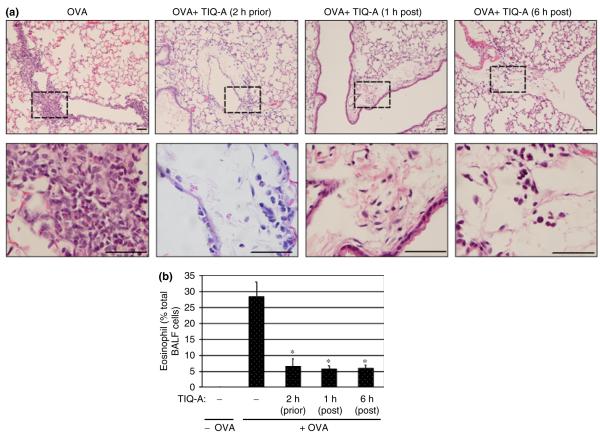Fig. 1.
Effect of PARP inhibition by TIQ-A on eosinophil recruitment following OVA sensitization and challenge. Mice received an i.p. injection of TIQ-A (6 mg/kg) or vehicle alone 2 h prior, 1 h post, or 6 h post-OVA challenge; mice were killed 48 h later. Lungs were either fixed with formalin or subjected to BAL. (a) Lung sections were stained with H&E and analyzed by light microscopy; bars: 4 μm. (b) BAL fluids were collected and centrifuged; cells were then differentially stained, and eosinophils were counted. Data are expressed as percent eosinophils from total cell number collected by BAL. Data are means ± SD of values from at least six mice per group. *Difference from challenged mice without TIQ-A treatment, P<0.01; #difference from TIQ-A-treated mice before OVA-challenge, P<0.01. PARP, poly(ADP-ribose) polymerase; TIQ-A, thieno[2,3-c]isoquinolin-5-one; BAL, bronchio-alveolar lavage; H&E, hematoxylin and eosin; OVA, ovalbumin; i.p., intraperitoneally.

